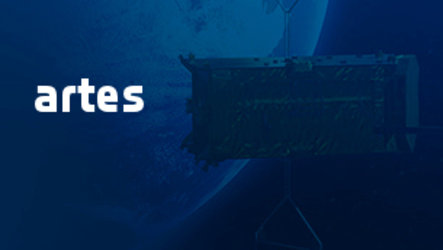EDRS Global
The initial two EDRS space nodes comprise the first phase of a future satellite relay network that will be able to transmit information from any part of the world to another.
The programme evolution is called EDRS Global (formerly GlobeNet); an extension of the EDRS programme starting in 2015. Under EDRS Global, ESA and Airbus will grow the user side of EDRS. The two partners will support the development of EDRS laser terminals on new user satellites and encourage wider adoption of the system by more sectors.
EDRS Global will also help to stimulate the development of new services in cooperation with institutional partners. It is key to fostering enhanced optical capabilities in the form of even higher data rates and reducing integration obstacles by designing lighter, compact and more efficient terminals, particularly for smaller satellites.
Phase-2 of EDRS Global includes a third geostationary satellite, planned for launch in 2020 to complement EDRS-A and -C. The third node will increase the amount of information EDRS can relay by more than half, and will add new features such as data encryption.
This will assist crisis management by providing increased security when relaying sensitive information between Remotely Piloted Aerial Systems and crisis centres around the world in quasi-real time.
The first two geostationary nodes relay data from low-orbit satellites to Europe, Africa and the Atlantic. EDRS Global will expand EDRS to worldwide coverage by placing satellites over other continents and oceans such as Asia, the Pacific and the Atlantic.
Earth-observing satellites and Remotely Piloted Aerial Systems can then use the system to downlink their information instantly to processing centres anywhere in the world.





